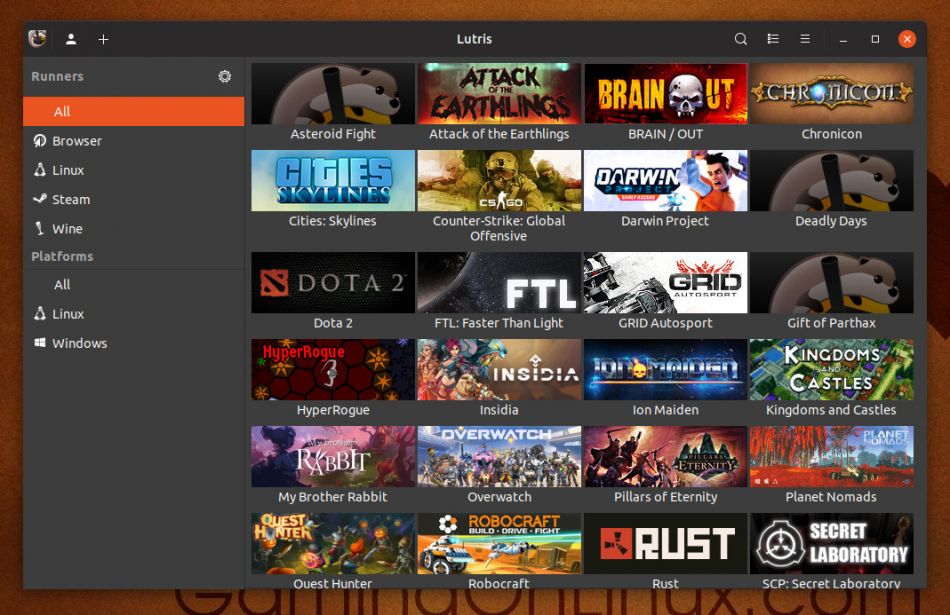MacOS VirtualBox VM on Ubuntu
Install Ubuntu Vm On Mac
1 day ago When you click “Finish,” Ubuntu should instantly start-up and begin installing the VM. When the installation is complete, it’ll be ready to use! Setting up Ubuntu in VMware via OSboxes VMDK. To set up an Ubuntu VM with the downloaded OSBoxes VMDK, do the following. First, click on the Home tab, and select “Create a New Virtual Machine.”. Launch VMWare Fusion (the instructions here are for version 7). Click on File - New and choose to Install from disc or image. Click on Use another disc or disc image and choose your.iso file with the Ubuntu image. Choose Easy Install, fill in password, and check the.
Posted by Shujin Wu on February 23, 2017
Step 1: Download the Sierra installer from Mac App Store.
This should be done in you Mac and the installer will be placed in /Application/ folder.

Step 2: Prepare Sierra iso
Use geerlingguy’s script to prepare a sierra iso file.
Install Ubuntu Vm On Mac Laptop
Step3: Install VirtualBox in Ubuntu
You should have your VirtualBox and the Extension Pack installed, or use my ansible role
Step 4: Open VirtualBox and create a new VM.
Settings:
- name: your_sierra_vm_name
- type: Osx
- version: Mac OS X 10.11 El Capitan (64-bit)
- Other
Step5: Configure VM for MacOS (Very important!)
Run following commands and replace “Sierra” with ‘your_sierra_vm_name’.
Step 6: Install Sierra
Insert sierra.iso to the sierra VM’s optical driver, and follow the instruction to install Sierra.
Note: In the installer, Go to Utilities > Disk Utility. Select the VirtualBox disk and choose Erase to format it as a Mac OS Extended (Journaled) drive.
Step 7: Remove sierra.iso and restart VM.
Reference
See also:
Ubuntu Desktop VM on a Mac
Preface: This tutorial outlines creating an Ubuntu Desktop VM using VMware WorkStation on a PC.
Prerequisites:
- Your Mac can host a Ubuntu VM (e.g., see Local VM Hosting) and VMware Fusion has been installed.
- You have access to an Ubuntu install .iso.
Video demonstrating build guidance below
Build the VM
Start VMware Fusion and use File | New, select Install from disc or image, and click Continue on the dialog.
Choose 'Use another disc or disc image', find your Ubuntu image where it's stored and select it, then click Continue.
Provide a Display Name, Account Name (i.e., login ID) and password to be used to login to the server ⇐make this something you will remember because resetting it is difficult at best. I would also check 'Make your home folder accessible to the virtual machine' with Read & Write; this will facilitate moving files back and forth. Click Continue when you are ready to roll.
VMware's defaults (e.g., 2 GB memory, 20 GB hard drive) are ok as a starting point so for a first-ever VM so probably just leave them. You can use Customize Settings to adjust the memory and other aspects of the VM but these can be manipulated later as well. Click Finish to start the VM build. You will be asked for a VM name and a storage location ... I chose tschLS1 and left the VM in Virtual Machines folder on the Mac (not shown).
You will see a black screen with a play button but thin install should start automatically in a bit (if not, click the play button). You should see some different activities in your VM window and shortly it should settle into installing Ubuntu. If you get a prompt about the latest version of VMware Tools I'd choose Download and Install. You might get a prompt asking for Administrator approval from VMware and you should say yes. Just be patient while this happens and the VM will likely reboot itself a few times. You can minimize VMware Fusion and do other things but now is not a good time to turn off or even hibernate your computer.
After awhile (depending on your host computer speed and capability of the disk where you are building the VM) you will see the VM start to install Ubuntu in earnest, providing screens telling you how good it will be. Just continue to be patient and again, you can minimize Fusion but don't turn off or hibernate your host computer. Note: When working with a VM window you might have to 'click twice' the first time mousing back in after doing something else on your computer; in a sense the first click transfers focus to the VM window and the second click is actually within the Window. Once you are in the VM window things work normally.
After awhile Ubuntu installs and presents you with a login screen. Click your name, enter your password, and choose Sign in.
After a bit (again, time depends on your host's capacity) Ubuntu tries to link you up with your Online Accounts. For a VM I plan to throw away in a few months, I wouldn't bother and suggest using Skip (upper right-hand corner). For now I'd not worry about updating Ubuntu (a good first step a bit later). After Skip you will be invited to send information from your use of Ubuntu; I would select not to but it is up to you and then click Next. Following that is a screen showing software you can install. I'd skip that for now too (but good first steps later); click Done for now.
Continue in Ubuntu installing updates etc. if you want but this walk thru ends with suspending the VM and coming back later. Use the WorkStation menu to select Suspend Guest and wait while your current VM state is saved.
After a bit (again, time depends on your host's capacity) VMware Fusion reports the VM has been suspended; don't turn off or hibernate your computer or remove a portable-hard-drive with your VM on it while the VM is suspending. VMware Fusion can now be exited with the VM ready to resume when we return.
